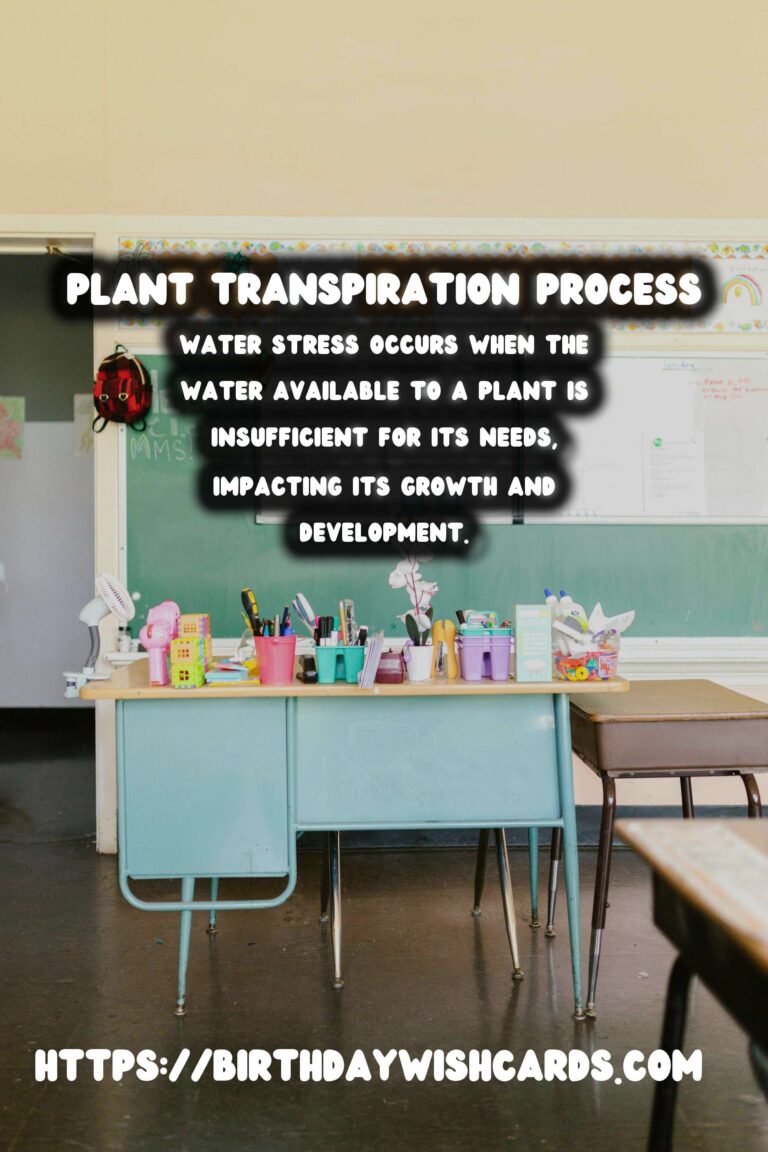
Plant transpiration is a crucial process that plays an integral role in the water cycle and plant physiology. It involves the movement of water from the roots to the leaves, where it is released into the atmosphere as water vapor. This process not only helps in cooling the plant but also facilitates the uptake of nutrients from the soil, making it essential for plant health and growth.
What is Plant Transpiration?
Transpiration is the process by which moisture is carried through plants from roots to small pores on the underside of leaves, where it changes to vapor and is released into the atmosphere. It is a vital function that allows plants to absorb carbon dioxide for photosynthesis while maintaining the flow of water and nutrients from roots to shoots.
Approximately 90% of the water that enters a plant’s roots is used in transpiration. This process is driven by the differences in vapor pressure inside the leaf and the atmosphere outside, creating a gradient that facilitates water movement.
Factors Affecting Transpiration Rate
Several factors influence the rate of transpiration, including environmental conditions and plant characteristics. Temperature, humidity, wind, and light intensity are primary environmental factors. Higher temperatures and wind speeds tend to increase transpiration rates, while high humidity can reduce it. Additionally, plant-specific factors such as leaf size, number of stomata, and cuticle thickness also play a role.
Understanding Water Stress
Water stress occurs when the water available to a plant is insufficient for its needs, impacting its growth and development. This condition can be caused by drought, high soil salinity, or poor water uptake by the roots. During water stress, plants may close their stomata to conserve water, which can lead to reduced photosynthesis and growth.
Chronic water stress can cause severe damage, including wilting, leaf drop, and eventually plant death. To mitigate these effects, plants have evolved various adaptations, such as developing deeper root systems or altering their leaf orientation to reduce water loss.
Adaptations to Water Stress
Plants have developed several strategies to cope with water stress. These adaptations include morphological, physiological, and biochemical changes. For example, some plants can alter their leaf structure to reduce water loss, while others can accumulate osmoprotectants that help maintain cell turgor under drought conditions.
Furthermore, certain species exhibit phenotypic plasticity, allowing them to adjust their growth patterns in response to water availability. These adaptations ensure that plants can survive and reproduce even in challenging environmental conditions.
Implications of Water Stress on Agriculture
Water stress has significant implications for agriculture, particularly in regions prone to drought. It can lead to reduced crop yield, affecting food security and farm incomes. Understanding the mechanisms of plant transpiration and water stress can aid in developing more resilient crop varieties and efficient irrigation practices.
Farmers can implement strategies such as soil moisture monitoring, choosing drought-resistant crops, and employing conservation tillage to mitigate the effects of water stress. These approaches can enhance water use efficiency and ensure sustainable agricultural practices.
Conclusion
Understanding plant transpiration and water stress is vital for both ecological and agricultural perspectives. By exploring the factors that influence transpiration and the adaptations plants have developed to cope with water stress, we can better manage water resources and support plant health. This knowledge is crucial for developing sustainable agricultural practices and ensuring food security in the face of climate change.
Plant transpiration is a crucial process that plays an integral role in the water cycle and plant physiology. Transpiration involves the movement of water from the roots to the leaves, where it is released into the atmosphere as water vapor. Water stress occurs when the water available to a plant is insufficient for its needs, impacting its growth and development. Plants have developed several strategies to cope with water stress, including morphological, physiological, and biochemical changes. Understanding the mechanisms of plant transpiration and water stress can aid in developing more resilient crop varieties and efficient irrigation practices.
#PlantTranspiration #WaterStress #PlantPhysiology #Agriculture #Sustainability

